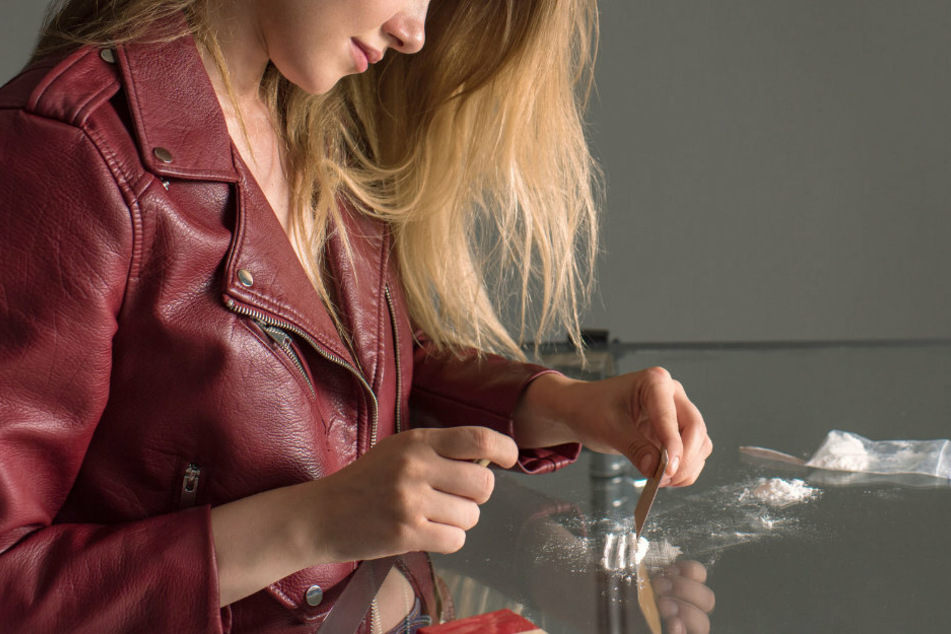Cocaine in the membrane: an expert shares the dirty tricks of the drug trade
The Hague, Netherlands - The Netherlands is a drug trafficking hub. Criminals use the Rotterdam port and well-developed highway system to send drugs throughout Europe. It's also perfect for a very specific kind of drug laundering.

The streets of the village of Nijeveen are lined with cute farms. The front yards are full of sunflowers and there are signs advertising fresh eggs.
At the beginning of August, this tranquil image was shattered. Armored cars rolled through the streets and armed police units stormed a farm. This farm was making seven million dollars a day, but not from selling eggs or potatoes.
The criminal organization had been "washing out" up to 440 pounds of cocaine a day in a converted horse stable. To date, it's the largest known cocaine lab in the Netherlands. It also showed investigators that, despite the coronavirus pandemic, the drug trade is flourishing as much as ever.
So-called "cocaine laundries" such as the one in Nijeveen are a Dutch phenomenon. This smuggling method is considered low risk because the cocaine is dissolved before it is shipped to Europe from the country of origin - usually Colombia.
Once dissolved, the solution can be put into shampoo bottles or sprayed on jeans or washcloths. Many other products can also serve as cocaine carriers like spice mixtures, cocoa and beeswax, according to narcotics analyst Rob, who would not give his full name. He is a chemical analyst with a special police unit that tracks down drug labs.
Holland is a "market leader" in drug trafficking
The goods treated with drugs are moved from the Rotterdam port to a remote places in the countryside. Then specialists from South America fly in assist with the "washing out" of drugs, says the investigator.
In Nijeveen, 13 Colombians were arrested. The Netherlands is one of the few countries in the world that has these cocaine laundromats. "We are the market leader," Rob says sardonically. That's something nobody is proud of.
The investigator explains that getting the cocaine out of whatever it is smuggled in isn't too difficult. The material, jeans for example, is rinsed with certain chemicals, the cocaine is washed out and settles as a powder and can then be pressed into blocks.
"It's not a difficult thing to do" he says, but it's complex and expensive. "In terms of profit margins, it doesn't matter," Rob says. The production of one kilo of cocaine costs a total of around $1,800, with the washing process perhaps around $4,700. "But that's nothing when you consider that each kilo of pure cocaine brings in around $29,500 euros in sales."
Drug laundering has its own special risks. Police seized tens of thousands of gallons of chemicals, flammable and explosive substances, in Nijeveen. "The dangers to citizens and the environment are enormous," Rob insists. The highly toxic residual waste is usually dumped wherever it is most convenient.
The drug market is growing
The Netherlands is one of Europe's most important hubs for the cocaine and synthetic drug trade. "One reason is the excellent logistics," says Sascha Strupp, a strategic analyst at Europol in The Hague. In fact, the excellent Dutch roads and highways help organized crime.
Cocaine is still usually smuggled to Europe stuffed in containers hidden between bananas or car parts. Then corrupt port officials help criminals get access the containers. They fill the drugs into bags and disappear, according to Strupp.
It is hard to say how much cocaine makes its ways to Europe each year, but Europol estimates that more than ten billion dollars' worth is traded. While authorities can't say exactly how much cocaine is traded, they know it comes in through ports in the Netherlands and Spain.
And it seems that the amount coming in is increasing. Investigators have found that large shipments of more than 2,200 pounds are becoming more and more frequent. Then there's the fact that the amount found in the "laundry" in Nijeveen is unprecedented and that cocaine is relatively inexpensive in Europe. These facts indicate that there is large supply. "The entire drug market is growing," says Strupp.
The EU is a transit country for drugs on their way to Asia or Russia
Last year, 75,000 pounds of cocaine were discovered in the port of Rotterdam. That's almost twice as much as was found in 2018. This year, narcotics offices expect that amount to double again. Similar growth rates have been reported in the port of Antwerp in Belgium.
"The EU is increasingly becoming a transit country for Asia and Russia," says the Europol expert. Criminals are taking advantage of the EU's good reputation. Narcotics officers are less suspicious of the containers from the EU than they are of those South America.
Despite some success, the agents have little chance breaking the supply chain. "We can't get to the people behind it," says Dutch investigator Rob, "They are far away."
Europol is counting on international cooperation, especially with the countries where the cocaine originates, in order to get to gang leaders and their money.
"We can only get a grip on the flow of drugs if we can get our hands on the money," Strupp says. But currently only an estimated one percent of the drug business profits are confiscated. In 2018, that was about around 236 million dollars.
Cover photo: 123RF/lightfieldstudios
